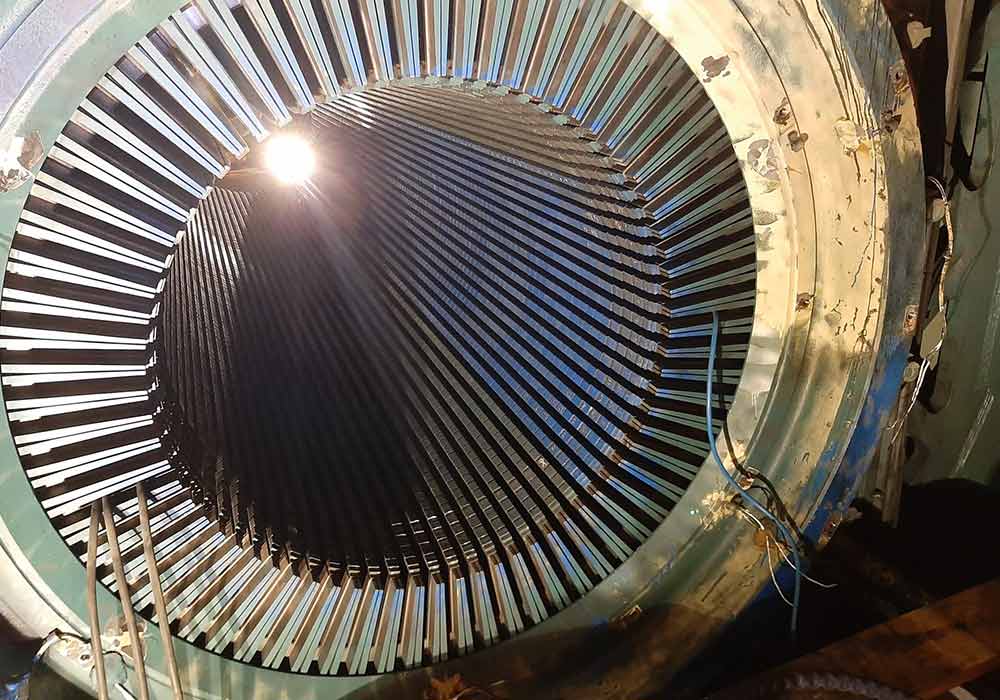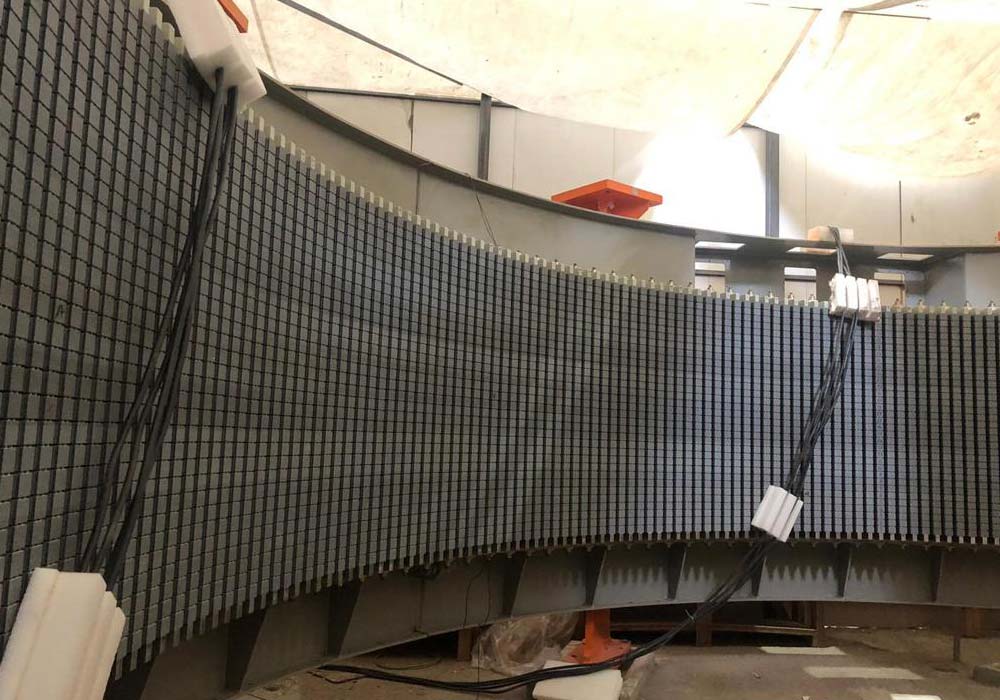Motor core is formed in 0,3-0,5 mm thick metal sheet with silica additive and insulated with 800-degree resistant oxide on both sides.
The insulation of these metal sheets can be impaired. Reasons for deterioration;


It is the formation of induction current between the inner diameter and the outer diameter of the core that constitutes the heating. The outer diameter of the core may contact the complete body and be a complete short circuit, as well as there are designs that sit on the body on the federations and only the parts that sit on the federated are short-circuited.
There must be a short circuit from both the outer diameter and the inner diameter in order for the core to warm up. In federated engines with insulation problems on the inside, there may be no heating if the outer side has encountered an area that is not short-circuited. It is not necessary to repair the cores in this way.
The winding of the motor without core repair indicates that the problem will occur again soon. The core test is also performed at 50Hz.
Can’t find the service you are looking for? Not sure which part is correct?
Need our experts to advise you?

SMART POWER
SYSTEMS